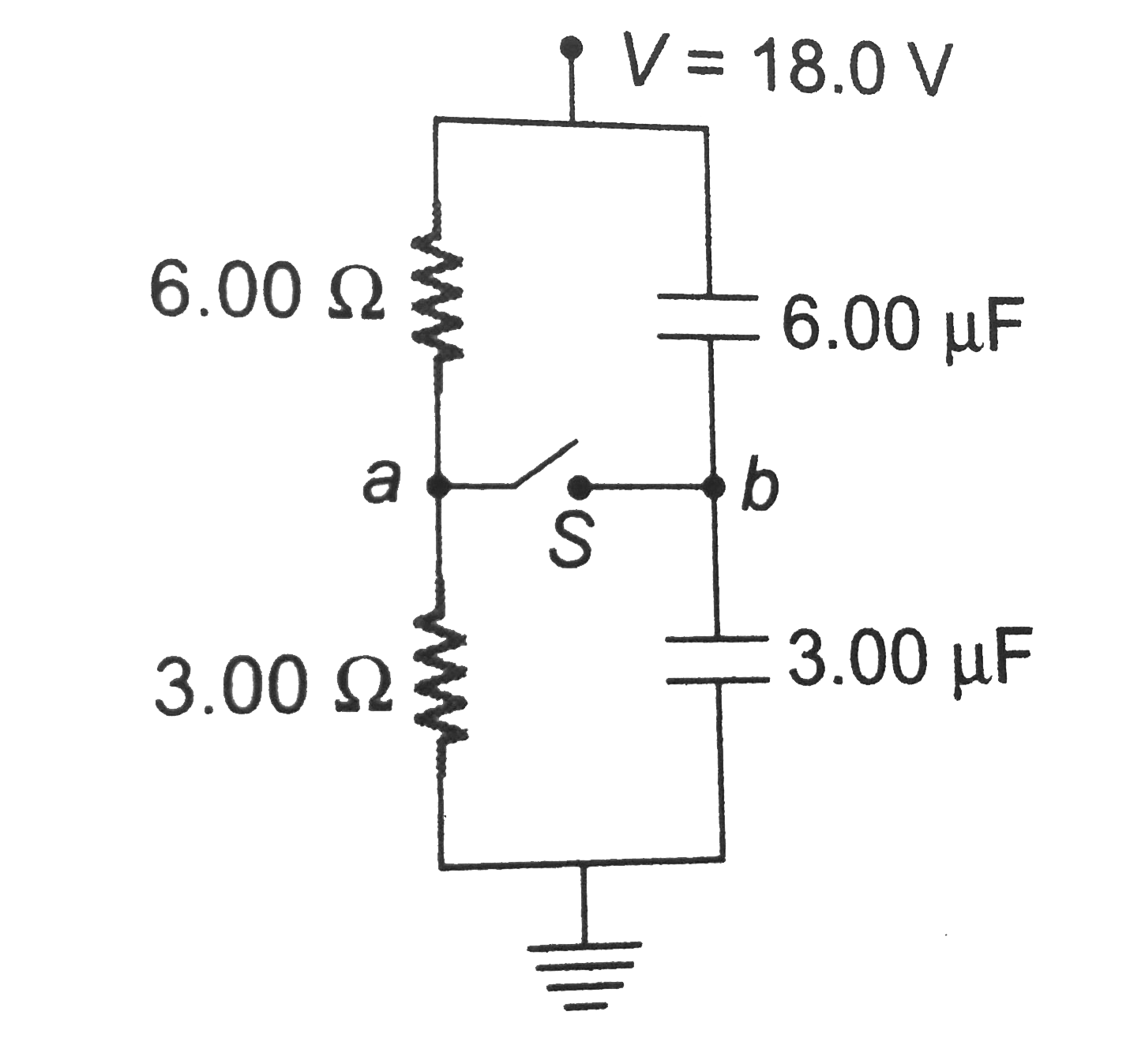
(a) What is the potential of point a with respect to point b in figure, when switch S is open?
(b) Which point, a or b, is at the higher potential?
(c) What is the final potential of point b with respect to ground when switch S is closed?
(d) How much charge flows through switch S when it is closed?
The correct Answer is:A, B, C
a. Va=18V and Vb=0 as no current flow through the resistors.
∴Va−Vb=10V
b. Va−Vb=+ve.
Hence Va>Vb
c. Current flows through two resistors,
i=18−06+3=2A
∴Vb−0=iR=2×3
or Vb=6V
d. Initially, V3μF=V6μF=18V
∴q3μF=54μC (q=CV)
and q6μF=V6Ω=iR
=2×6=12V
∴q6μF=72μC
V3μF=V3Ω=6V
∴93μF=18μC
△q=qf−qi=−36μC on both capacitors.
Topper's Solved these Questions
- CAPACITORSBOOK - DC PANDEY ENGLISHCHAPTER - CAPACITORSEXERCISE - OBJECTIVE_TYPE
1 Video
- CAPACITORSBOOK - DC PANDEY ENGLISHCHAPTER - CAPACITORSEXERCISE - OBJECTIVE_TYPE
1 Video
- ATOMSBOOK - DC PANDEY ENGLISHCHAPTER - ATOMSEXERCISE - MEDICAL ENTRANCES GALLERY
42 Videos
- COMMUNICATION SYSTEMBOOK - DC PANDEY ENGLISHCHAPTER - COMMUNICATION SYSTEMEXERCISE - Subjective
11 Videos
Similar Questions
(i) What is the final potential (in V) of point b with respect to ground in steady state after switch S is closed ?
(ii) How much charge flows through switch S from b to a after it is closed in μC.
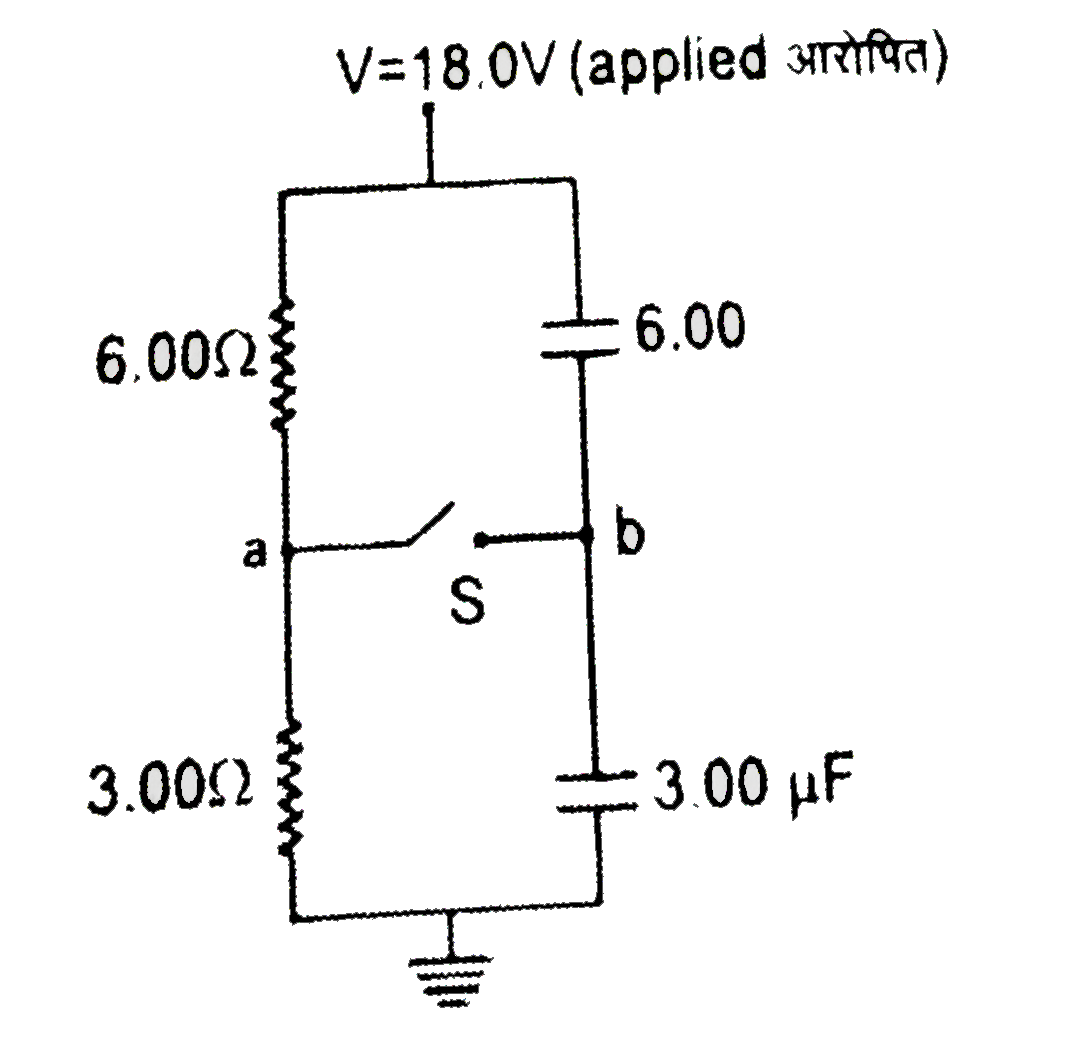
View SolutionThe flow of charge through switch S if it is closed is
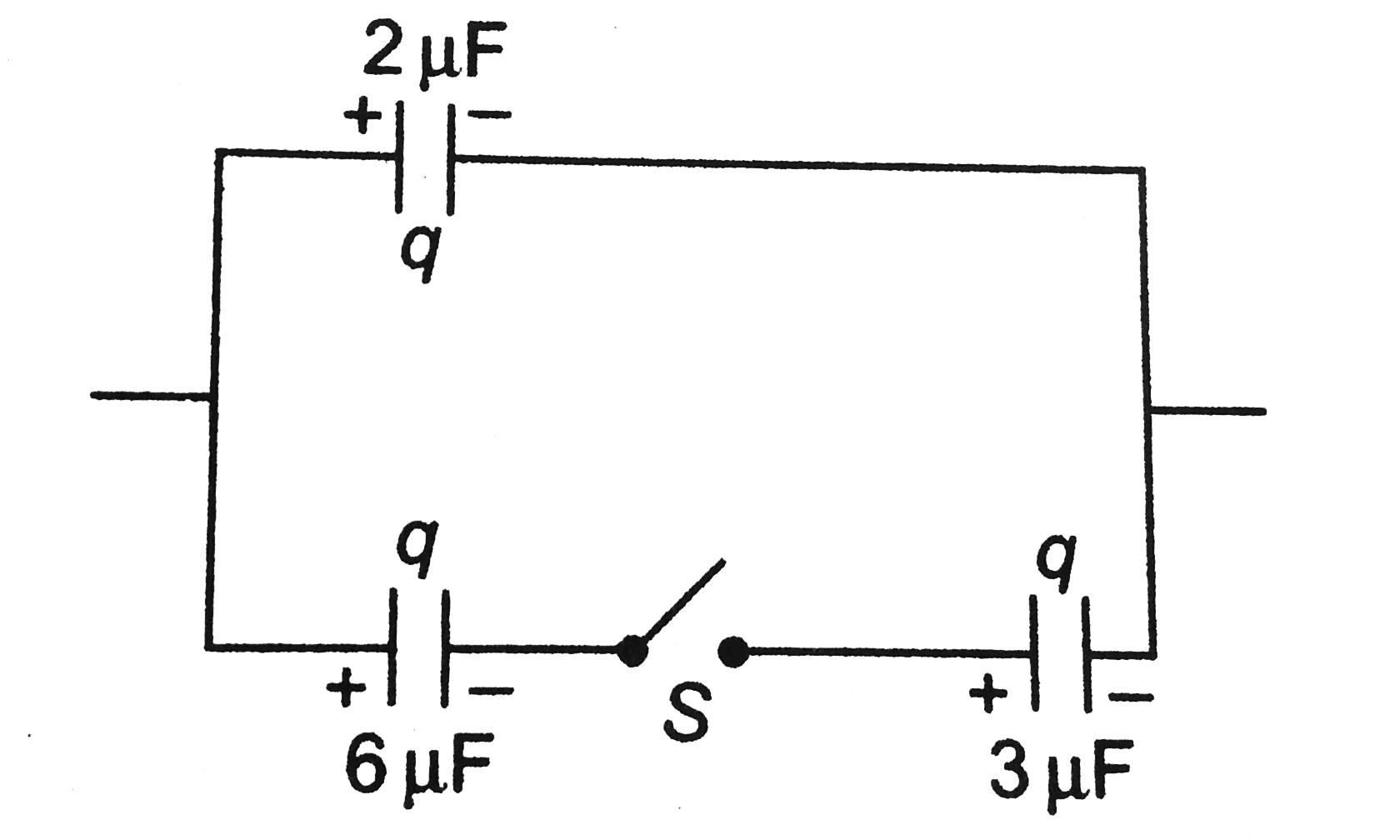
View SolutionFind the charge flown when the switch S is closed.
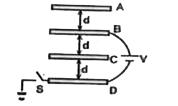
View SolutionThe capacitors in are initially uncharged and are cannected as in the diagram with switch S open. The applied potential differnce is Vab=+360V.
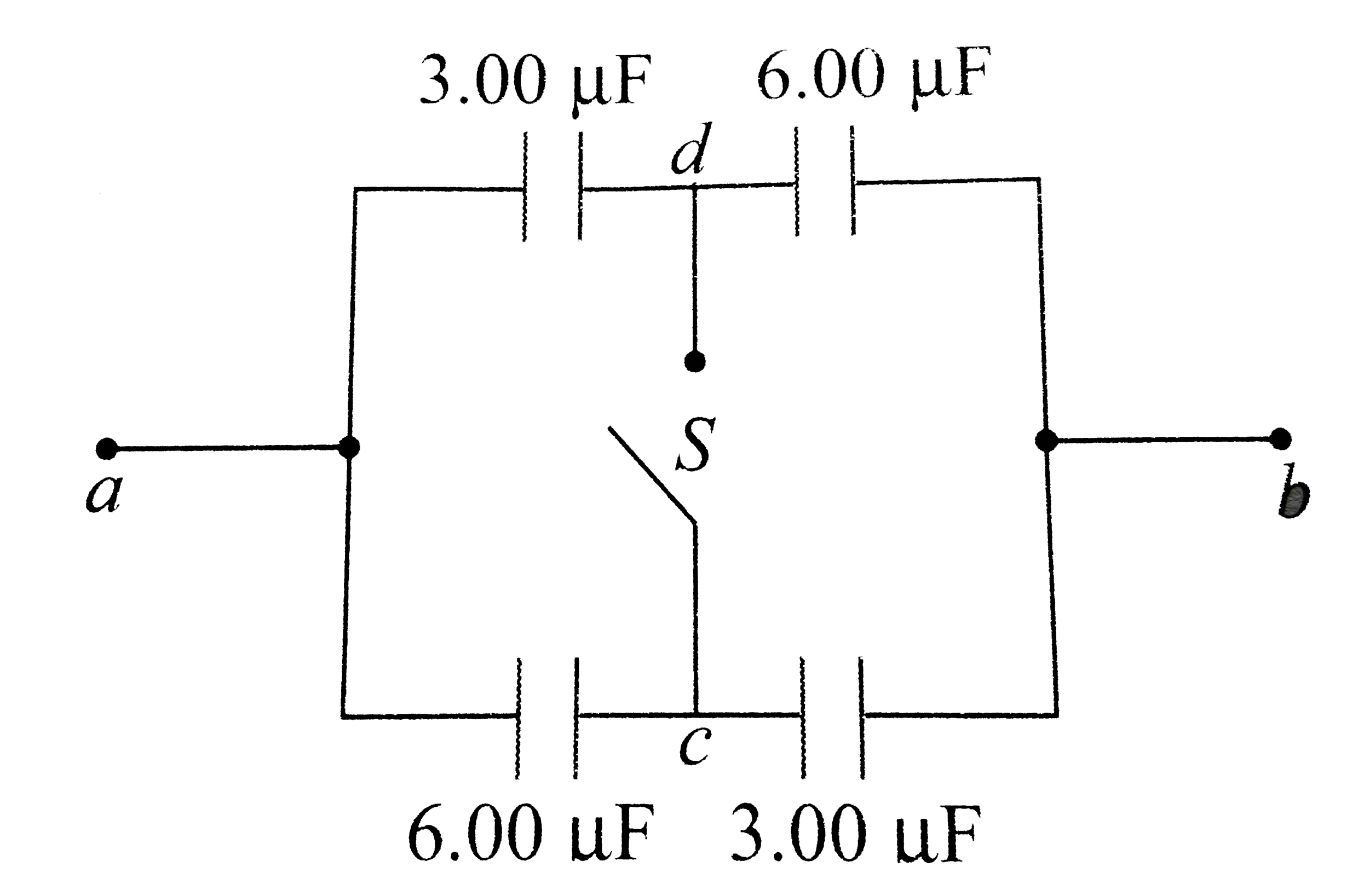 .
.
a. What is the potential differnce Vcd
b What is the potential deffernce across each capacitor afrer switch S is closed?
c. How much charge will flow through the awitch after it is closed?
View SolutionWhat charges will flow through A,B and C in the direction shown in the figure when switch S is closed?
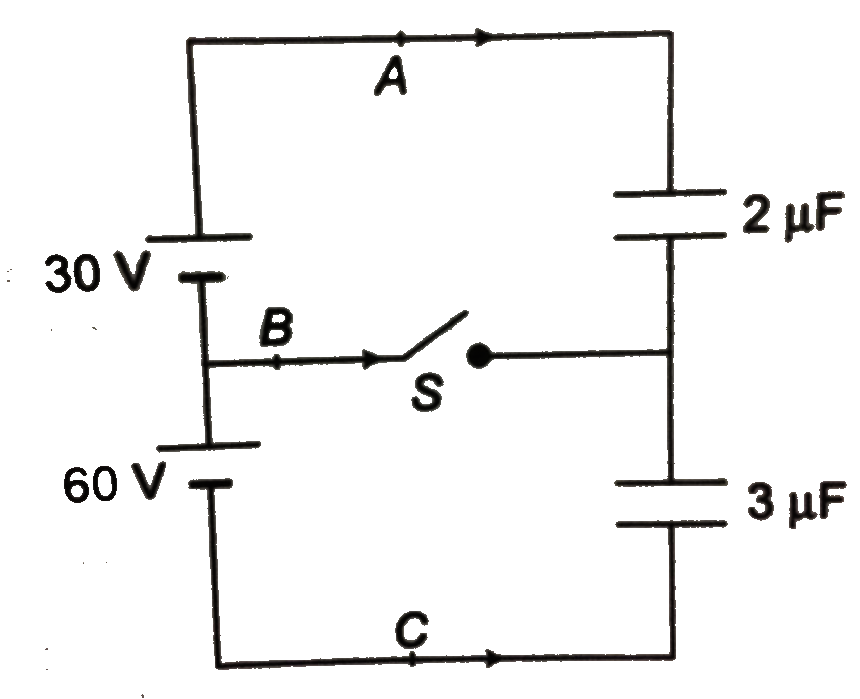
View SolutionFind :
(i) Potential differnece between points M and N when switch 'S' is open.
(ii) Potential of point N after long time when switch is closed.
(iii) How much does the charge after long time when S is closed ?
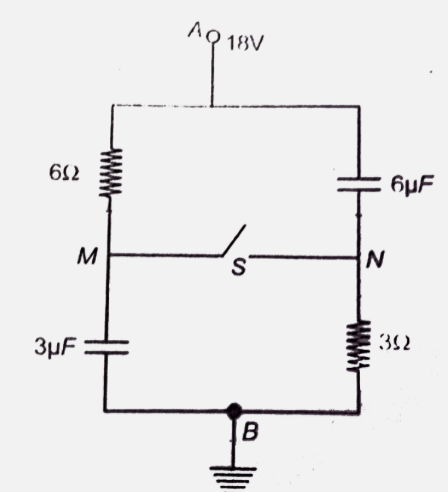
View SolutionIn the circuit shown in figure, E=120V,R1=30.0Ω,R2=50.0Ω and L=0.200H. Switch S is closed at t=0. Just after the switch is closed.
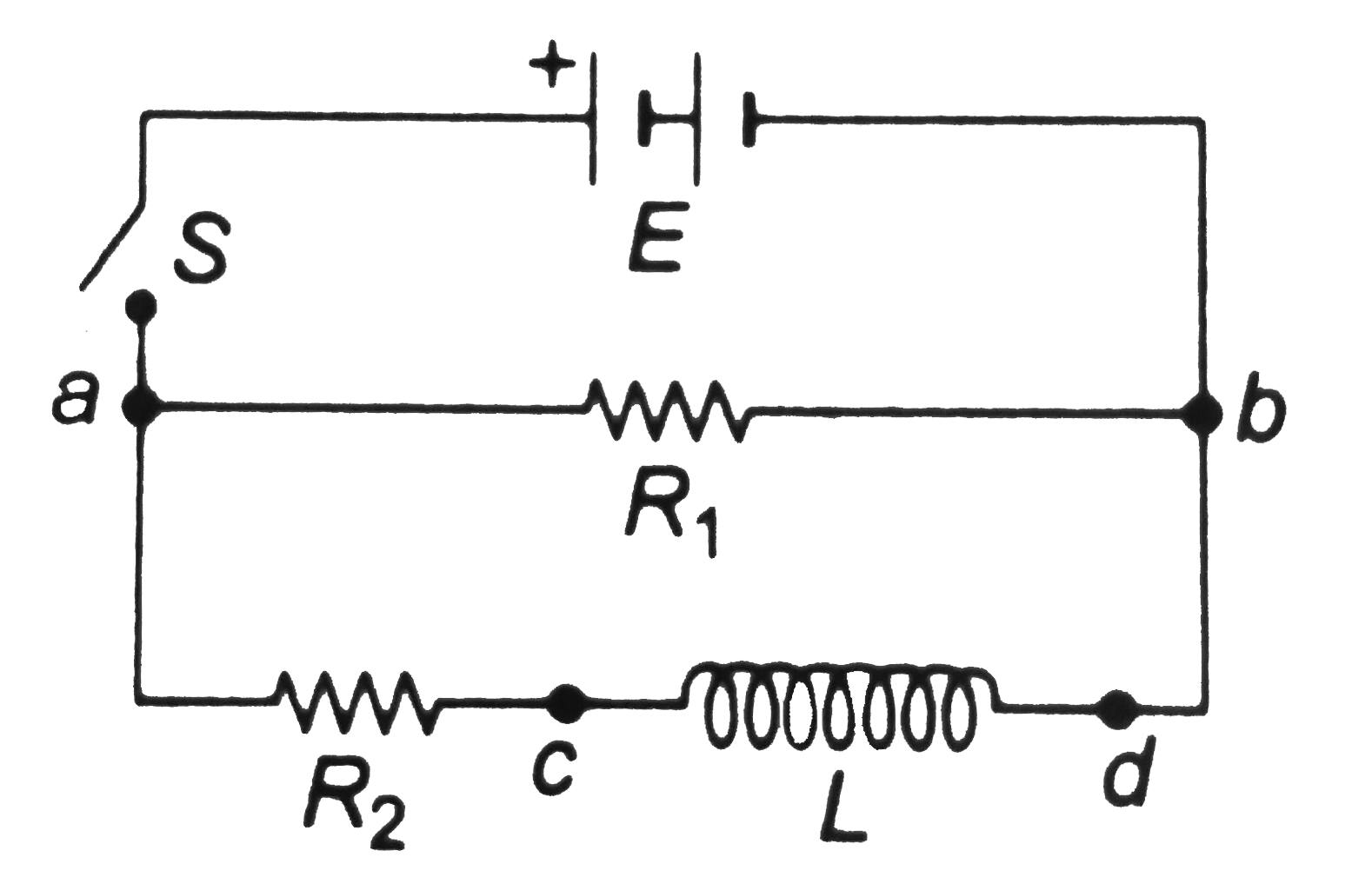
(a) What is the potential difference Vab across the inductor R1?
(b) Which point, a or b, is at higher potential?
(c) What is the potential difference Vcd across the inductor L?
(d) Which point, c or d, is at a higher potential? The switch is left closed for a long time and then is opened. Just after the switch is opened
(e) What is the potential difference Vab across the resistor R1?
(f) Which point a or b, is at a higher potential?
(g) What is the potential difference Vcd across the inductor L?
(h) Which point, c or d, is at a higher potential?
View SolutionConsider the circuit shown in figure, after switch S is closed.
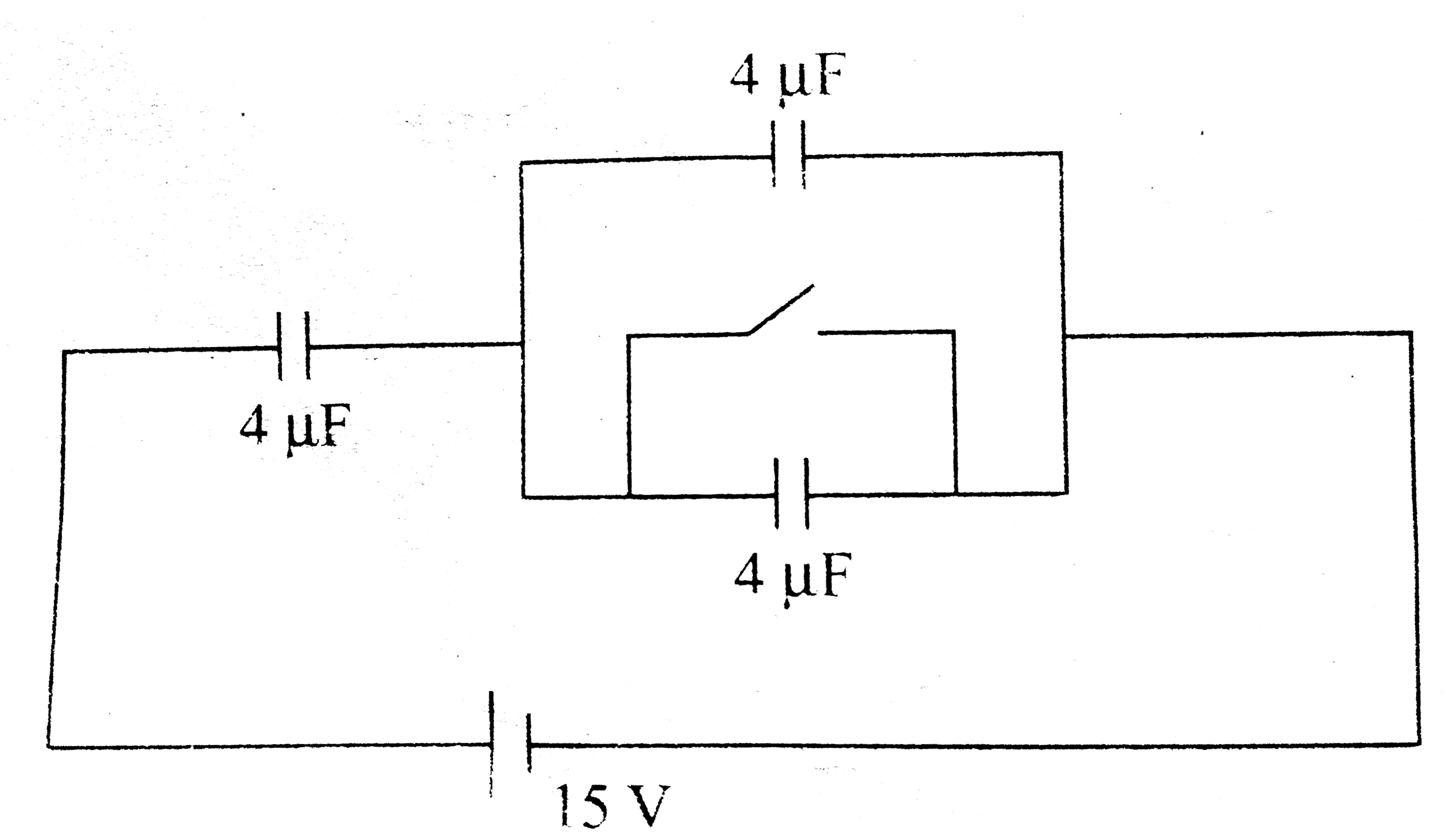
What amount of charge will flow through the switch?
View SolutionThe circuit was in the shown state for a long time. Now if the switch S is closed then the net charge that flows through the switch S, will be
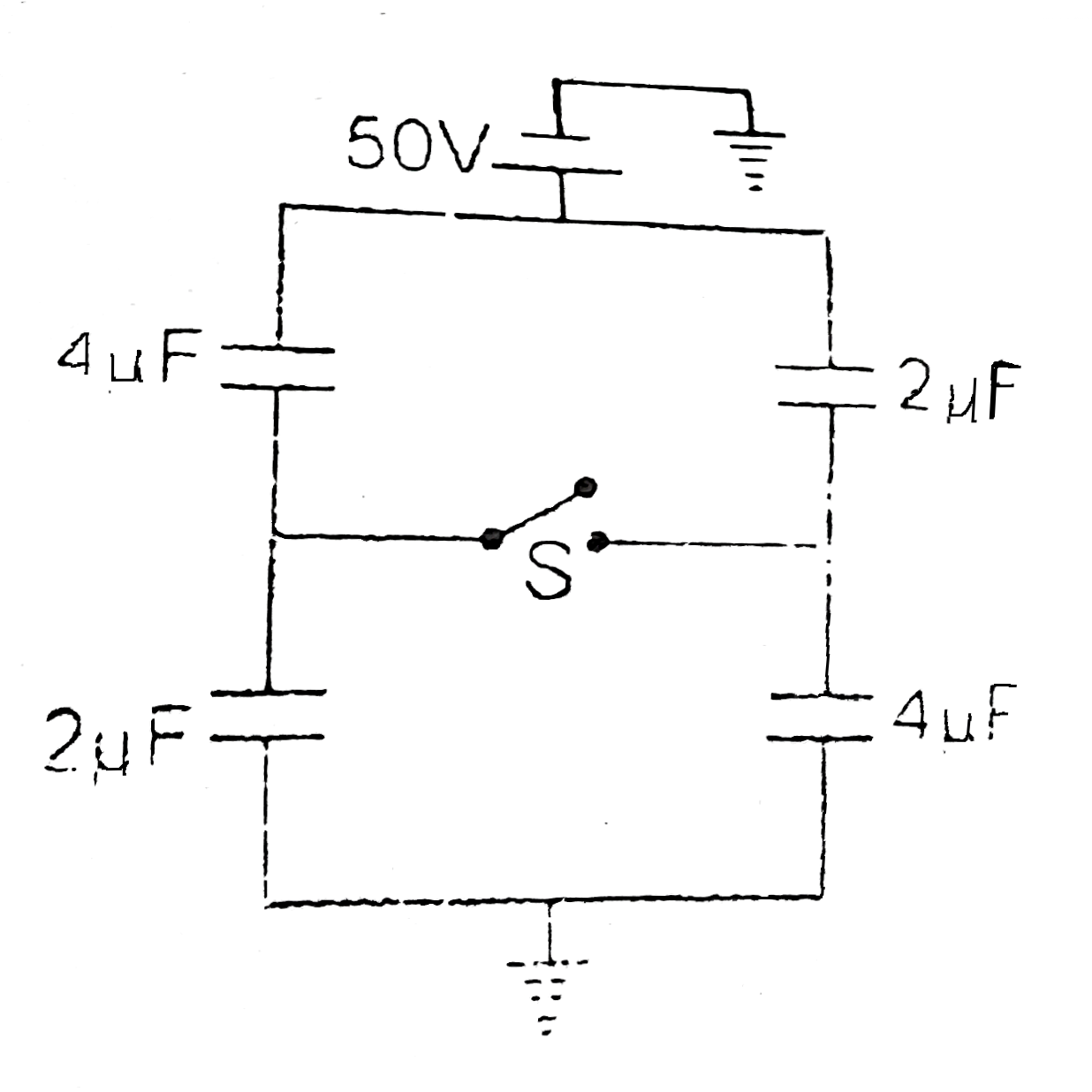
View SolutionCurrent through the battery at the instance when the switch S is closed is
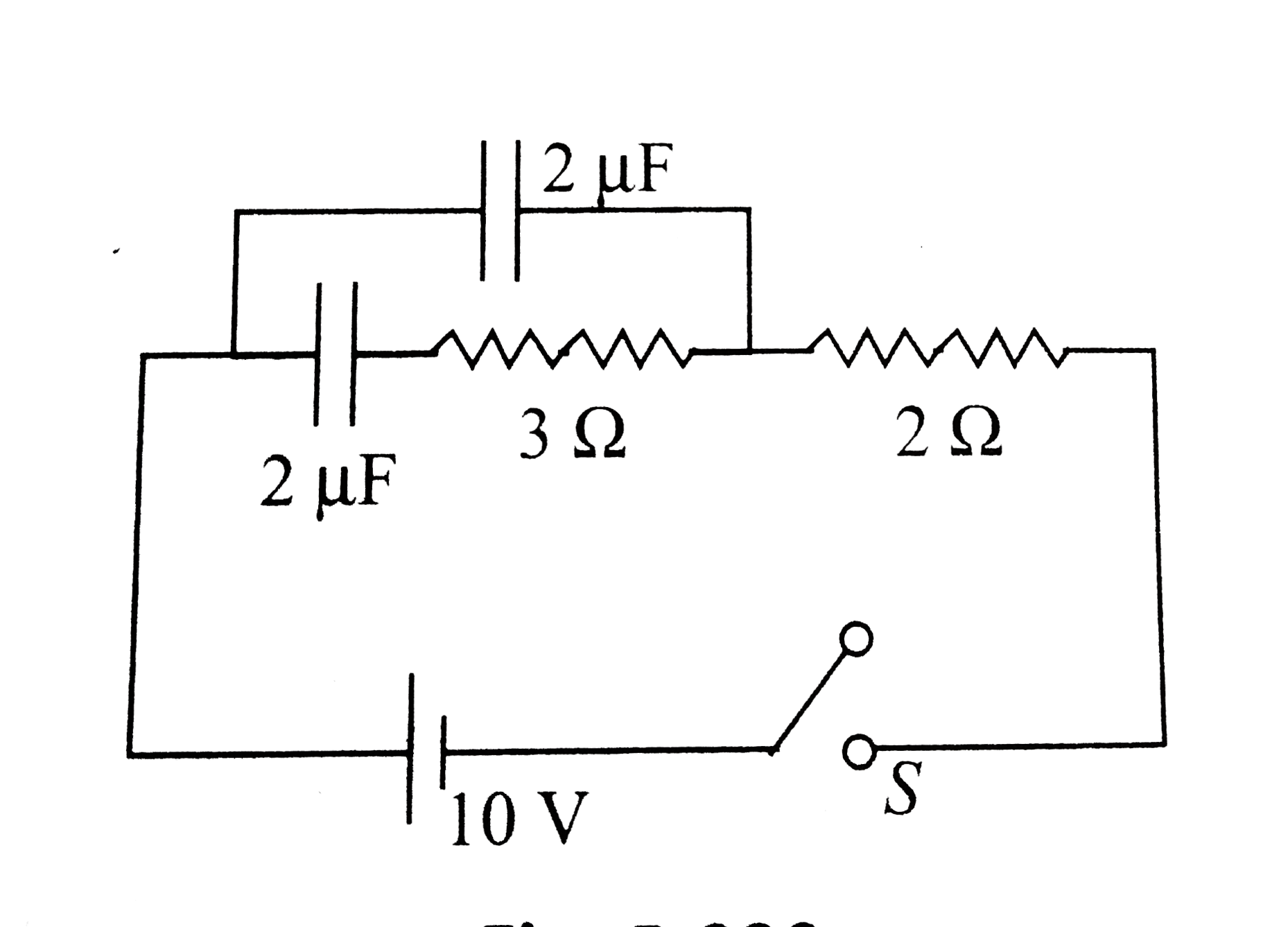
View Solution
